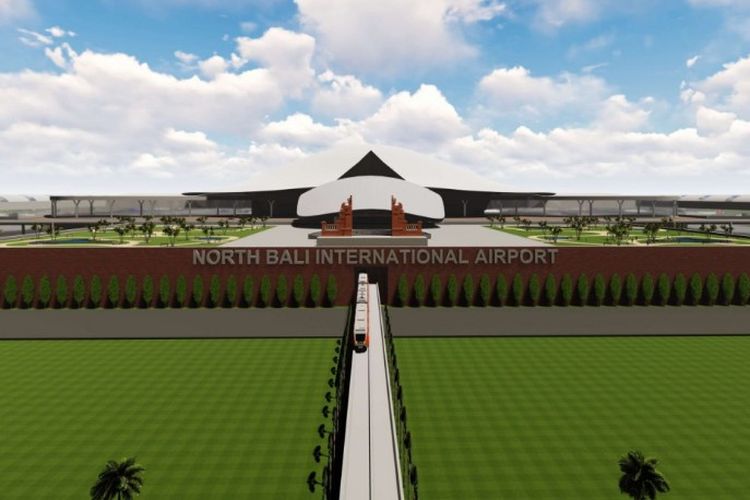No to North Bali Airport – Says Megawati
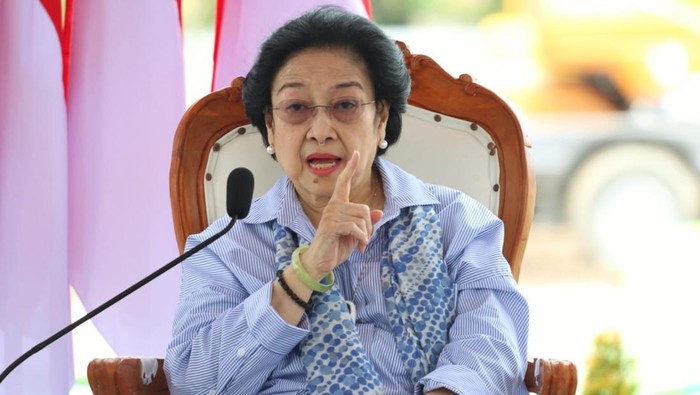 As reported by Kompas.com, the Minister of Transportation has joined the heated dialogue surrounding the cancellation of plans to build a second international airport in North Bali.
As reported by Kompas.com, the Minister of Transportation has joined the heated dialogue surrounding the cancellation of plans to build a second international airport in North Bali.
Recent news reports quote the former 5th President of Indonesia and PDI Party Chief Megawati Soekarnoputri, who has strongly endorsed plans to abandon the airport project on the Island’sIsland’s north shore.
Adita Irawati, a spokesperson for the Minister of Transportation, confirmed on Wednesday, 18 January 2023, the proposed airport in North Bali is missing from the current Strategic National Projects (PSN) list. The decision to eliminate a 2nd International Airport in Bali as a Government priority was taken after considering new toll roads and new port facilities and the fact that Bali’s Ngurah Rai International Airport can still be upgraded to support tourism to accommodate 35 million travelers – three times the current passenger levels,
The Transportation Official suggests that Bali should work to integrate the various elements of its infrastructure rather than spend resources on building a new airport. Adding: “We will focus first on developing the existing Ngurah Rai Airport. Angkasa Pura has confirmed that they can upgrade and increase current capacity.”
Earlier, Kompas.com quoted Ex-President Megawati Soekarnoputri, who openly admitted she rejects plans to construct an airport in the North Bali Kubutambahan District at Buleleng Regency. Megawati expressed concerns that the North Bali Airport could marginalize the local population surrounding the proposed airport site and only serve to profit tourism investors. Continuing to comment, Megawati said: “When the plan was announced to build an airport in Buleleng, my extended family living there said they wanted to build the airport, I was angry. I called Governor Koster. I said it was so easy to say the project was only to benefit tourism. No way.”
North Bali Airport
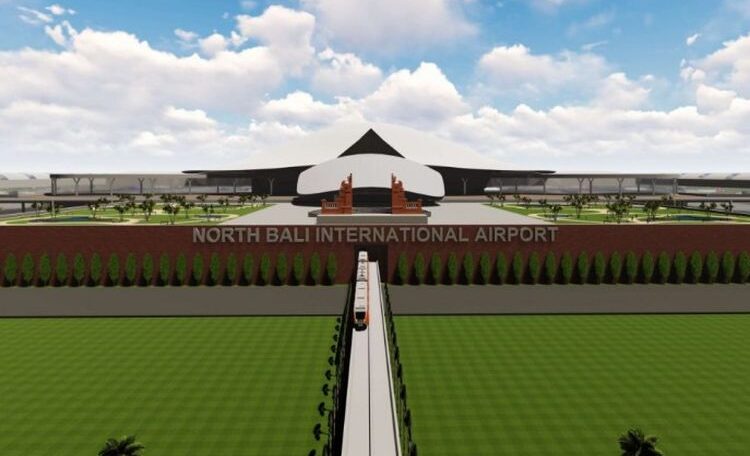 Megawati spoke during an inspection visit to the Special Economic Zone now being developed in Sanur, Bali, on Monday, 16 January 2023. Megawati, possibly seeking to claim the lion’s share of credit for rejecting the North Bali Airport project, said: “President Jokowi heard (me).”
Megawati spoke during an inspection visit to the Special Economic Zone now being developed in Sanur, Bali, on Monday, 16 January 2023. Megawati, possibly seeking to claim the lion’s share of credit for rejecting the North Bali Airport project, said: “President Jokowi heard (me).”
She reported telling the National Cabinet Secretary, Pramono Anung: “In the name of the people of Bali, please help. Don’t just think of yourself! Do you know the Island of Bali is small? The population is small; investors are the only people who want to come (to Bali).”
In the same vein, Megawati claims President Jokowi and several of his ministers tried to persuade her to agree to the airport construction plan. Insisting she is steadfast in her refusal, she added: “I asked Mr. Koster (Governor), Mr. Deputy, Mr. Minister, Jokowi, well, at that time Wishnutama (Former Minister of Tourism and Creative Economy) – who all came to my house. I was shocked. All this to persuade me?”
The Former President, insisting she represents the people of Bali, says her rejection of the new airport was not without reason. Megawati repeated that, beyond the fact that Bali is a small island, the Island already has the Ngurah Rai International Airport, which can serve as the Island’sIsland’s domestic and international airport. Alternatively, Mega recommended adding an additional runway to the present airport. (Main Article: North Bali Airport)
The former President said Juanda Airport in Surabaya and the Banyuwangi Airport in nearby East Java could also be utilized for Bali visitors. Continuing, she said: “Why not just make it into a triangle? I was once President; please help too! It’s Ngurah Rai Bali, Banyuwangi, then Surabaya – three triangles are made.”
A Humble Defense of Backpackers
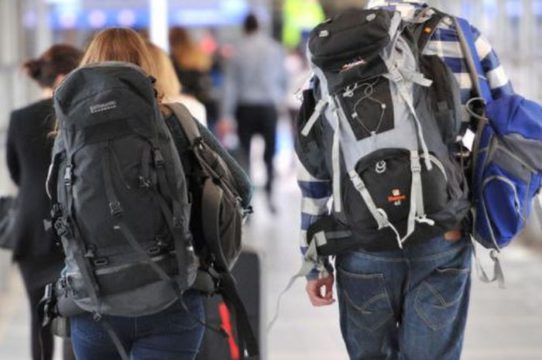 Quoted by many mainstream national media, including Kompas.com, the Minister of Maritime Affairs and Investment Luhut Binsar Pandjaitan, who also serves as the National COVID-19 Czar, said that in the future, Indonesian tourism wants to focus on quality foreign tourists and ban international “backpackers.” (Main Article: North Bali Airport)
Quoted by many mainstream national media, including Kompas.com, the Minister of Maritime Affairs and Investment Luhut Binsar Pandjaitan, who also serves as the National COVID-19 Czar, said that in the future, Indonesian tourism wants to focus on quality foreign tourists and ban international “backpackers.” (Main Article: North Bali Airport)
Follow-up reporting to Minister Luhut’s comments states that Indonesian Immigration officials would soon screen foreign nationals applying for tourist visas, screening out those determined to be “low quality” backpackers. Luhut continued: “We will filter arriving tourists. We don’t want backpackers coming to a clean Bali. We want (only) quality visitors.”
With due respect to Minister Luhut, who is doing a masterful job in combatting COVID-19, there’s abundant authoritative evidence that his reasoning may be flawed when it comes to the youth and backpacker tourism sectors.
The United Nation’s World Trade Organization (WTO) has done extensive research on the potential economic and strategic value of backpackers and their fellow travelers classed as “the youth market” – those comprised of “generation y” (millennials, born between 1980 and 2000) and “generation z” (born after 2000).
Moreover, a solid case can be made that the “youth market,” given its size and market potential, is the market segment best suited to help Indonesia develop its national tourism goals, especially the desire to encourage tourism development in remote, underdeveloped areas, such as the much-touted “10 New Bali’s.” (Main Article: North Bali Airport)
In examining the youth market and its significant backpacker component, we hope Minister Luhut and the Minister of Tourism and the Creative Economy, Sandiaga Uno, will consider some of the following:
- The United Nations has recognized the youth market as a major force for development and positive social change, having the potential to drive sustainable development in the tourism sector.
- The United Nations World Tourism Organization (UNWTO) projects that by the year 2020, youth numbering 370 million travelers will spend US$400 billion on travel.
- The youth market is considered the fastest growing market segment in travel, with youth travel representing 23% of the one billion international holiday pre-COVID trips taken annually. (Main Article: North Bali Airport)
- The youth and backpacker market is often incorrectly perceived as low-spending. Research carried out by the World Youth, Student and Education Confederation (WYSE) shows a market segment spending more than US$1,000 a week, staying for extended periods, and spending 60% or more of their total travel budget at their chosen destination with local suppliers from the surrounding community.
- WYSE estimates that the youth market spends an average of US$2,160 on their main trip each year.
- In Australia, which is traditionally a key source market for Indonesian tourism, the youth market has been tracked, showing that 58% of this travel segment return to a destination within five years. (Main Article: North Bali Airport)
- The “youth market” has a particular affinity for gadget-based technology for booking accommodation, for finding restaurants and attractions, mapping their travels, and keeping in touch with family, friends, and fellow travelers. Governments will need to maximize Internet connectivity to attract this youthful sub-sector of nomadic travelers and encourage extended length-of-stays.
- Because of the youth market’s affinity for the Internet and social network marketing, they provide an incomparable and valuable instantaneous marketing boost to any destinations they visit when they share their travel experience and destination information via applications that include, but are not limited to: Facebook, Instagram, WhatsApp, Skype, Zoom, Twitter, Google, YouTube, QC, WeChat, QZone, Tumblr, Baidu Tieba (PRC), Snapchat, Viber, Sina Weibo (PRC), Pinterest, Xanga, Wayn, Renren, Foursquare, VKontakte, Line, QQ, and Tiktok.
- Research shows that the “youth travel market” is frequently “purpose driven” seeking to learn a new skill, study a language, undertake some educational experience, or volunteer to work on community development projects in their chosen destination during their travels. (Main Article: North Bali Airport)
- Countries that allow the youth market legal short-term employment opportunities have been shown to enjoy even more success in attracting these travelers.
- WYSE research demonstrates that the “youth market” is both resilient and adventurous, making it particularly appropriate to “new” travel destinations, such as remote regions of Indonesia, where service and infrastructure development levels may be lacking.
- Worthy of special note in this pandemic era, the youth market is among the first to return to conflict areas, regions that have suffered natural disasters, and post-plaque locales. (Main Article: North Bali Airport)
- The foreign and domestic “youth market” traveling off-the-beaten-track tends to be less demanding and more accepting when accommodation and transportation facilities are less than luxurious, and the local infrastructure is sometimes lacking.
- The “youth market” also plays a vital role as the pioneering vanguards of travel, preparing the way for other higher-spending visitors to come. Studies show that backpackers revisit the travel memories of their youth years later with families and relatives in tow.
- Past “youth market” documented visitor numbers and the prosperity they created for local small and medium-sized businesses form key parts of feasibility studies submitted to financial institutions to build modern hotels and restaurants to replace the homestays and warungs of the past. (Main Article: North Bali Airport)
- Millennials and backpackers are especially attracted to “off-the-beaten-track” and new international destinations. Seeking “genuine travel experiences,” backpackers in their 20s and 30s traveling in Indonesia and other parts of Southeast Asia are often from the upper economic classes, with a large number working as professionals in their home countries.
- In the Indonesian experience, “backpackers” of an earlier generation were the trailblazers who pioneered destinations such as Bali, Yogyakarta, North Sumatra, Lombok, and Komodo in the 1970s and 1980s.
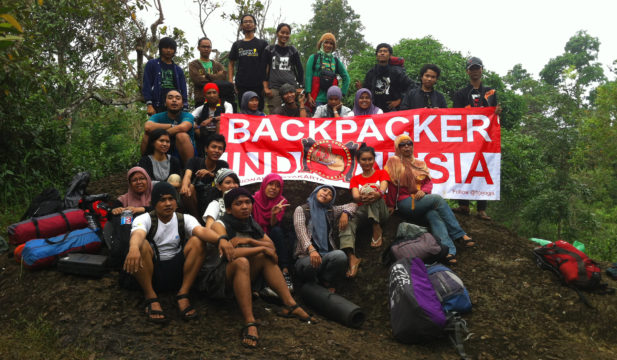 With due respect to Minister Luhut, who is doing a masterful job in combatting COVID-19, there’s abundant authoritative evidence that his reasoning may be flawed when it comes to the youth and backpacker tourism sectors. (Main Article: North Bali Airport)
With due respect to Minister Luhut, who is doing a masterful job in combatting COVID-19, there’s abundant authoritative evidence that his reasoning may be flawed when it comes to the youth and backpacker tourism sectors. (Main Article: North Bali Airport)
The United Nation’s World Trade Organization (WTO) has done extensive research on the potential economic and strategic value of backpackers and their fellow travelers classed as “the youth market” – those comprised of “generation y” (millennials, born between 1980 and 2000) and “generation z” (born after 2000).
Moreover, a solid case can be made that the “youth market,” given its size and market potential, is the market segment best suited to help Indonesia develop its national tourism goals, especially the desire to encourage tourism development in remote, underdeveloped areas, such as the much-touted “10 New Bali’s.” (Main Article: North Bali Airport)
In examining the youth market and its significant backpacker component, we hope Minister Luhut and the Minister of Tourism and the Creative Economy, Sandiaga Uno, will consider some of the following:
- The United Nations has recognized the youth market as a major force for development and positive social change, having the potential to drive sustainable development in the tourism sector.
- The United Nations World Tourism Organization (UNWTO) projects that by the year 2020, youth numbering 370 million travelers will spend US$400 billion on travel.
- The youth market is considered the fastest growing market segment in travel, with youth travel representing 23% of the one billion international holiday pre-COVID trips taken annually. (Main Article: North Bali Airport)
- The youth and backpacker market is often incorrectly perceived as low-spending. Research carried out by the World Youth, Student and Education Confederation (WYSE) shows a market segment spending more than US$1,000 a week, staying for extended periods, and spending 60% or more of their total travel budget at their chosen destination with local suppliers from the surrounding community.
- WYSE estimates that the youth market spends an average of US$2,160 on their main trip each year. (Main Article: North Bali Airport)
- In Australia, which is traditionally a key source market for Indonesian tourism, the youth market has been tracked, showing that 58% of this travel segment return to a destination within five years.
- The “youth market” has a particular affinity for gadget-based technology for booking accommodation, for finding restaurants and attractions, mapping their travels, and keeping in touch with family, friends, and fellow travelers. Governments will need to maximize Internet connectivity to attract this youthful sub-sector of nomadic travelers and encourage extended length-of-stays. (Main Article: North Bali Airport)
- Because of the youth market’s affinity for the Internet and social network marketing, they provide an incomparable and valuable instantaneous marketing boost to any destinations they visit when they share their travel experience and destination information via applications that include, but are not limited to: Facebook, Instagram, WhatsApp, Skype, Zoom, Twitter, Google, YouTube, QC, WeChat, QZone, Tumblr, Baidu Tieba (PRC), Snapchat, Viber, Sina Weibo (PRC), Pinterest, Xanga, Wayn, Renren, Foursquare, VKontakte, Line, QQ, and Tiktok.
- Research shows that the “youth travel market” is frequently “purpose driven” seeking to learn a new skill, study a language, undertake some educational experience, or volunteer to work on community development projects in their chosen destination during their travels. (Main Article: North Bali Airport)
- Countries that allow the youth market legal short-term employment opportunities have been shown to enjoy even more success in attracting these travelers.
- WYSE research demonstrates that the “youth market” is both resilient and adventurous, making it particularly appropriate to “new” travel destinations, such as remote regions of Indonesia, where service and infrastructure development levels may be lacking.
- Worthy of special note in this pandemic era, the youth market is among the first to return to conflict areas, regions that have suffered natural disasters, and post-plaque locales. (Main Article: North Bali Airport)
- The foreign and domestic “youth market” traveling off-the-beaten-track tends to be less demanding and more accepting when accommodation and transportation facilities are less than luxurious, and the local infrastructure is sometimes lacking.
- The “youth market” also plays a vital role as the pioneering vanguards of travel, preparing the way for other higher-spending visitors to come. Studies show that backpackers revisit the travel memories of their youth years later with families and relatives in tow.
- Past “youth market” documented visitor numbers and the prosperity they created for local small and medium-sized businesses form key parts of feasibility studies submitted to financial institutions to build modern hotels and restaurants to replace the homestays and warungs of the past.
- Millennials and backpackers are especially attracted to “off-the-beaten-track” and new international destinations. Seeking “genuine travel experiences,” backpackers in their 20s and 30s traveling in Indonesia and other parts of Southeast Asia are often from the upper economic classes, with a large number working as professionals in their home countries. (Main Article: North Bali Airport)
- In the Indonesian experience, “backpackers” of an earlier generation were the trailblazers who pioneered destinations such as Bali, Yogyakarta, North Sumatra, Lombok, and Komodo in the 1970s and 1980s.
Pak Luhut and Pak Sandiaga – the leaders plotting the course of future tourism in Indonesia will hopefully not fail to notice that the Indonesian members of “Generation X” and “Generation Y” have markedly different travel tastes from their parents. Young Indonesians are now among the world’s most gadget-savvy, eager to learn, share, and influence social media. Very much unlike their parents, many young Indonesian are also “backpackers” who grab their wallets, ATM cards, shorts, and a backpack to explore the endless wonders and cultural diversity of Tanah Airku Indonesia. (Main Article: North Bali Airport)
We hope that with his stated disdain for backpackers, Minister Luhut will not someday discover he has thrown out the baby with the bathwater.
Bali Businesses Need a Helping Hand
 Bali has suffered unprecedented financial setbacks resulting from the global COVID-19 pandemic. An economic analyst, IGK Sandjaja Putra, interviewed in Balipost.com on Tuesday, 15 March 2022, said that Bali entrepreneurs burdened with debt repayment desperately need a “bailout.”
Bali has suffered unprecedented financial setbacks resulting from the global COVID-19 pandemic. An economic analyst, IGK Sandjaja Putra, interviewed in Balipost.com on Tuesday, 15 March 2022, said that Bali entrepreneurs burdened with debt repayment desperately need a “bailout.”
Putra explained that the “bailouts” would be cash injections needed for bankrupt or near-bankrupt companies or banks in financial difficulties to cover their short-term debt. (Main Article: North Bali Airport)
Bali has suffered unprecedented financial setbacks resulting from the global COVID-19 pandemic. An economic analyst, IGK Sandjaja Putra, interviewed in Balipost.com on Tuesday, 15 March 2022, said that Bali entrepreneurs burdened with debt repayment desperately need a “bailout.”
Putra explained that the “bailouts” would be cash injections needed for bankrupt or near-bankrupt companies or banks in financial difficulties to cover their short-term debt.
Bali has suffered unprecedented financial setbacks resulting from the global COVID-19 pandemic. An economic analyst, IGK Sandjaja Putra, interviewed in Balipost.com on Tuesday, 15 March 2022, said that Bali entrepreneurs burdened with debt repayment desperately need a “bailout.” (Main Article: North Bali Airport)
Putra explained that the “bailouts” would be cash injections needed for bankrupt or near-bankrupt companies or banks in financial difficulties to cover their short-term debt.
World Beach Games Bali 2023 05-12 Aug 2023
 The State News Agency Antara reports that the International Surfing Association (ISA) is praising Indonesia’s preparations as the host country of the Association Olympic Committees (ANOC) World Beach Games (AWBG) 2023, scheduled to be held 05-12 August. (Main Article: North Bali Airport)
The State News Agency Antara reports that the International Surfing Association (ISA) is praising Indonesia’s preparations as the host country of the Association Olympic Committees (ANOC) World Beach Games (AWBG) 2023, scheduled to be held 05-12 August. (Main Article: North Bali Airport)
“The ISA is pleased following their recent visit to Bali. With the support of ANOC and the Indonesian National Federation, we are certain that over the coming months, all the necessary preparations will be in place for an international standard surfing competition,” said the Surfing Technical Delegate Erick Krammer in a press release from the ANOC on Saturday, 21 January 2023.
Krammer said he is impatient to witness international surfers compete in Bali – a destination with a unique culture and world-class waves. Adding: “The people (of Bali) are very kind with a unique local culture and home to world-class waves and amazing beaches.” The ANOC official said Bali has played a central role in world surfing for over a half-century and is therefore eager to showcase Bali as an extraordinary destination to the nations and athletes competing in Bali. (Main Article: North Bali Airport)
Organizers of the Bali Beach Games also report that Cruz Beckham, the 17-year-old son of international soccer star David Beckham, is expected to attend the surfing championship in Bali.
Raja Sapta Oktohari, the chairman of the Indonesian Olympic Committee, recently said: “The World Beach Games in Bali will become a multi-sport event that is awaited by all. What’s more, Cruz Beckham is likely to come to Bali.”
The AWBG will attract 1,500 athletes and 1,400 officials from more than 100 countries. The games will feature 14 sporting events, including aquathlon, beach volleyball, beach soccer, beach tennis, water polo, beach wrestling, beach karates, windsurfing, 5km open water swimming competitions, 3 x 3 beach basketball, beach sprint, rowing, surfing, and water-badminton. (Main Article: North Bali Airport)
Bali Ogoh-Ogoh Parades Tues, 21 March 2023
 Bali Governor Wayan Koster has revealed that he will host Ogoh-Ogoh competitions in conjunction with Hari Raya Nyepi Tahun Baru Caka 1945 set for the eve of Nyepi on Tuesday, 21 March 2023.
Bali Governor Wayan Koster has revealed that he will host Ogoh-Ogoh competitions in conjunction with Hari Raya Nyepi Tahun Baru Caka 1945 set for the eve of Nyepi on Tuesday, 21 March 2023.
Unlike pre-Nyepi celebrations during the COVID epidemic, the 2023 Nyepi parades and celebrations will not be subject to government-imposed limitations on public movement and controlled crowd size. (Main Article: North Bali Airport)
Bali Governor Wayan Koster has revealed that he will host Ogoh-Ogoh competitions in conjunction with Hari Raya Nyepi Tahun Baru Caka 1945 set for the eve of Nyepi on Tuesday, 21 March 2023.
Unlike pre-Nyepi celebrations during the COVID epidemic, the 2023 Nyepi parades and celebrations will not be subject to government-imposed limitations on public movement and controlled crowd size. (Main Article: North Bali Airport)
The Provincial Government of Bali has set standards and rules for the government-sponsored Ogoh-Ogoh competition, with winning groups granted cash prizes. Judges will evaluate the entries at local village destinations, including Banjar Hall, Village Halls, or alike, before the Ogoh-Ogoh floats embark on parades.
- Ogoh-Ogoh effigies must be made from natural materials, with the use of plastics and Styrofoam forbidden.
- The Ogoh-Ogoh effigies must have a maximum height of 3 meters.
- The Ogoh-Ogoh effigies should reflect Hindu-Bali culture and not contain political, racial, tribal elements or pornography.
- The floats should reflect Bali-Hindu deities or demonic giants.
The panel of judges for the 2023 Ogog-Ogoh parades will evaluate the entries on their theme, materials used, construction techniques, anatomy, anatomical proportion, expressiveness, creativity, aesthetic qualities, and religiosity. (Main Article: North Bali Airport)
Governor Koster will award prizes to the nine best Ogoh-Ogoh floats presented by the City of Denpasar and various regencies. Winners will receive Rp. 50 million each and trophies. Second prize winners (9 in all) will receive Rp. 35 million and trophies. The nine third-place winners will each receive a trophy and prize money of Rp. 5 million.
All prize payments are subject to sales tax. Registration by eligible villages, banjars, and other organizations opens on 05 February until 22 February 2023. Judging will be done locally between 01 and 10 March 2023. (Main Article: North Bali Airport)
The top three entries judges on the sub-district level will go forward to a municipal and regency level set to take place between 13 and 20 March 2023. The top winners will be publicly announced on 23 March 2023.
Bali International Hospital: Opens Q4 2023
 In groundbreaking cooperation with the US-based Mayo Clinic, Bali International Hospital will open on Sanur Beach at the end of 2023. (Main Article: North Bali Airport)
In groundbreaking cooperation with the US-based Mayo Clinic, Bali International Hospital will open on Sanur Beach at the end of 2023. (Main Article: North Bali Airport)
Bali International Hospital will become a landmark project within Sanur’s newly established Healthcare Special Economic Zone (SEZ). The government-owned hospital operator PT Pertamina Bina Medika – Indonesia Healthcare Corporation (IHC) hopes construction work will be completed at the end of 2023. The hospital is expected to be fully operational in early 2024.
The Bali International Hospital building will cover 60,000 square meters of covered space spread over four floors; the hospital will play host to 250 beds – including 35 intensive care units, eight operating rooms, and four catheterization laboratories equipped with advanced diagnostic imaging capabilities.
For the development of this international hospital, IHC works in cooperation with Mayo Clinic, the US-based global medical group, by advising on the future hospital’s progress, planning, and design. Mayo Clinic will provide administrative and operational management consulting services in the second phase. (Main Article: North Bali Airport)
First-class foreign medical specialists are being recruited under provisions of special visas allowing the progressive transfer of knowledge and technology.
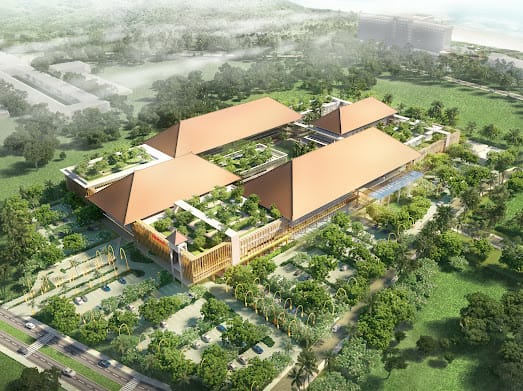 “Empowered by this partnership with Mayo Clinic, BIH aims to open five world-class centers of excellence, notably in critical illnesses management of Cardiology, Oncology, and Neurology treatment. In addition, Gastro-Hepato (Gastroenterology) and Orthopedics will be medical specialties fully integrated into this Class A+ Hospital. This new public institution will be equipped with a range of state-of-the-art devices operated at a technological level, such as artificial intelligence and robotics, never seen before in Indonesia.” said drg. Mira Dyah Wahyuni, President Director of PT Pertamina Bina Medika IHC.
“Empowered by this partnership with Mayo Clinic, BIH aims to open five world-class centers of excellence, notably in critical illnesses management of Cardiology, Oncology, and Neurology treatment. In addition, Gastro-Hepato (Gastroenterology) and Orthopedics will be medical specialties fully integrated into this Class A+ Hospital. This new public institution will be equipped with a range of state-of-the-art devices operated at a technological level, such as artificial intelligence and robotics, never seen before in Indonesia.” said drg. Mira Dyah Wahyuni, President Director of PT Pertamina Bina Medika IHC.
The Bali International Hospital building will cover 60,000 square meters of covered space spread over four floors; the hospital will play host to 250 beds – including 35 intensive care units, eight operating rooms, and four catheterization laboratories equipped with advanced diagnostic imaging capabilities. (Main Article: North Bali Airport)
For the development of this international hospital, IHC works in cooperation with Mayo Clinic, the US-based global medical group, by advising on the future hospital’s progress, planning, and design. Mayo Clinic will provide administrative and operational management consulting services in the second phase.
First-class foreign medical specialists are being recruited under provisions of special visas allowing the progressive transfer of knowledge and technology. (Main Article: North Bali Airport)
“Empowered by this partnership with Mayo Clinic, BIH aims to open five world-class centers of excellence, notably in critical illnesses management of Cardiology, Oncology, and Neurology treatment. In addition, Gastro-Hepato (Gastroenterology) and Orthopedics will be medical specialties fully integrated into this Class A+ Hospital. This new public institution will be equipped with a range of state-of-the-art devices operated at a technological level, such as artificial intelligence and robotics, never seen before in Indonesia.” said drg. Mira Dyah Wahyuni, President Director of PT Pertamina Bina Medika IHC.
Poverty Still Widespread in Bali
The Bali Bureau of Statistics has identified three pockets of poverty in Bali based on 2022 data.
- 41,000 people live below the poverty level in the Regency of Buleleng, North Bali.
- 30,000 people live below the poverty level in Bali’s capital city of Denpasar.
- 29,000 people live below the poverty line in the Regency of Karangasem.
All three of these areas have pledged to eliminate extreme poverty by 2024. (Main Article: North Bali Airport)
In the capital of Denpasar, the poor constitute 2,487 family units spread across the four sub-districts (kecamatan) of:
- North Denpasar 665 families.
- East Denpasar 583 families.
- South Denpasar 598 families.
- West Denpasar 641 families.
In the East Bali Regency of Karangasem, data provided by I Nyoman Sutirtayasa, the Head of the Planning, Research, and Development Agency (Bapelitbangda), said the population of the Regency is counted at 522,217 people with the poor put at more than 29,000 (5.6%). This is an increase in the number living below the poverty line
- 27,020 poor in 2017
- 26,020 poor in 2018
- 25,990 poor in 2019
- 24,690 poor in 2020
- 28,520 poor in 2021
- 29,450 poor in 2022
The COVID-19 epidemic is blamed for the growing poverty numbers in Karangasem.
Karangasem
The Regent of Karangasem, I Gede Dana, said his administration had implemented three programs to reduce or eradicate extreme poverty under the programs with names includes: “Family of Hope” (keluarga harapan), “Basic Necessities” (program sembako), “Smart Indonesia” (Indonesia Pintar), and direct cash grants to villages (BLT Desa). Other forms of assistance cover rice grants, disability assistance, old-age assistance, free electrical connections, free LPG, and health insurance.
Dana also commented that assistance is being given via employment programs, pre-employment programs, vocational training, employment capacity building, and loan programs. Other anti-poverty programs operated by the Karangasem administration were improvements in services and health infrastructure matters such as access to public water, improved public transportation, and new roadways. (Main Article: North Bali Airport)
Denpasar
Meanwhile, the Island’s capital of Denpasar, to overcome extreme poverty and improve social services, is strengthening to enhance the roles of community heads (lurah) and providing training on the management and interpretation of data collected from the community and the actual implementation of anti-poverty programs.
The Mayor of Denpasar, IGN Jaya Negara, recently said he is working to enhance community cooperation (gotong royong) in overcoming societal problems. City administrators are working to coordinate anti-poverty efforts performed by local private and public organizations. The Index for Universal Health Coverage (UHC) for Denpasar has now reached 98.93%, which is in keeping with targets set by the Central Government.
The Problem of Poverty in Bali
Across every area where extreme poverty is recorded in Bali, the common problems at the roots are inadequate housing, poor or no access to utilities (i.e., electricity and water), and a lack of proper health care. (Main Article: North Bali Airport)
Indonesia Immigration launches online Visa extension Service
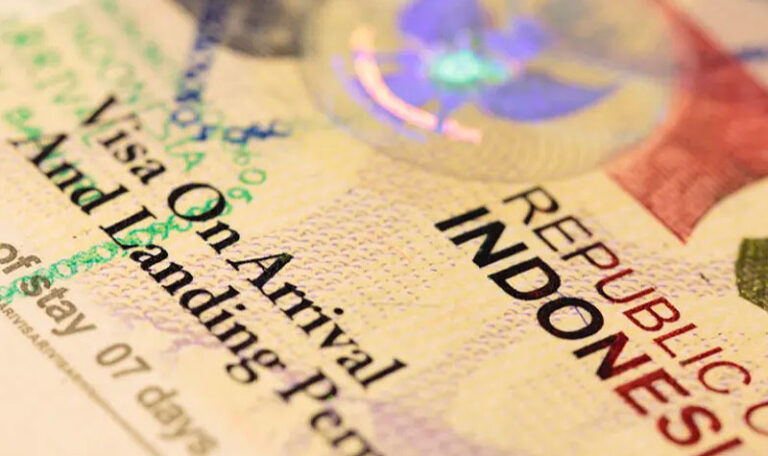 Indonesia’s Minister of Law and Human Rights and the Directorate General of Immigration has publicly announced a new way for tourists to extend their visas. It is now possible for tourists in Indonesia who entered the country on a visa on arrival or an electronic visa on arrival to apply to extend their stay online. The news comes as a part of the newly appointed Director General Silmy Karim’s plans to digitize as much of Indonesia’s Immigration operations as possible. (Main Article: North Bali Airport)
Indonesia’s Minister of Law and Human Rights and the Directorate General of Immigration has publicly announced a new way for tourists to extend their visas. It is now possible for tourists in Indonesia who entered the country on a visa on arrival or an electronic visa on arrival to apply to extend their stay online. The news comes as a part of the newly appointed Director General Silmy Karim’s plans to digitize as much of Indonesia’s Immigration operations as possible. (Main Article: North Bali Airport)
Director Karim issued a statement to reporters in Jakarta on Thursday, 27th January. He also outlined how the upgrades to the Department of Immigration website also make it easy for investors to apply for the newly created second home visa. Director Karim said, “coinciding with Immigration’s anniversary, now foreigners can apply for tourist visit visas and pre-investment (second home visas) on the molina.imigrasi.go.id website. The launch of this new service using online payment methods”.
The e-visa on arrival service was launched in November 2022 and is available for citizens from 87 countries. The new service allows tourists who are planning to visit Indonesia for 30 days for tourism, leisure, or specific business-related activities. It remains the case that the visa on arrival can be extended one time for an additional 30 days. Perhaps the most exciting update for tourists to Indonesia is that this extension of the tourist visa on arrival can now be applied for online and from any device. (Main Article: North Bali Airport)
In order to apply for the e-visa on arrival, or an extension, visitors much first register on the immigration website. They must fill in basic details and upload a copy of their passport and a passport photo. Once completed, a verification email will be sent to them. Once the account is activated, travelers can apply for their e-VOA or VOA extension. When the e-VOA is approved, provided all the details are entered correctly, the visa documents will be delivered by email. For the extension, the website guides users through the application process. The same account details and website can be used to apply for a second home visa.
This will save tourists wishing to stay longer than 30 days in Bali on a VOA lots of time. As has been the case until now, tourists must visit their nearest Immigration Office three separate times to extend their VOA if they are not enlisting the services of a visa agent. On the first visit, they submit the application. On the second visit is a short interview and checking of biometric records, and on the third visit, tourists can collect their visa extension. Now the extension application can be completed online. (Main Article: North Bali Airport)
Bloggers And Influencers To Promote Village Tourism
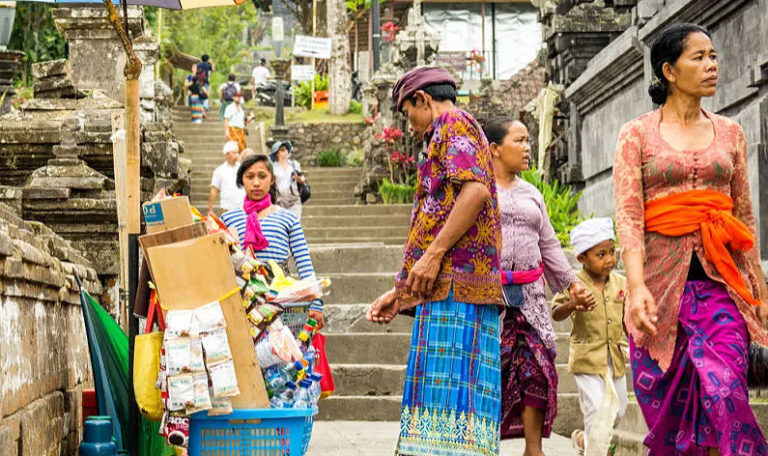 The Badung Tourism Office in Bali has announced that they will establish an intensive promotional campaign to encourage visitors to the island to explore local tourism villages. The Head of the Badung Tourism Office, I Nyoman Rudiartha, has shared plans to encourage more people to support community and cultural tourism programs in the regency. Badung Regency is one of the most popular areas of Bali, covering key tourism destinations, including Kuta, Legian, Seminyak, Canggu, Nusa Dua, and Uluwatu. (Main Article: North Bali Airport)
The Badung Tourism Office in Bali has announced that they will establish an intensive promotional campaign to encourage visitors to the island to explore local tourism villages. The Head of the Badung Tourism Office, I Nyoman Rudiartha, has shared plans to encourage more people to support community and cultural tourism programs in the regency. Badung Regency is one of the most popular areas of Bali, covering key tourism destinations, including Kuta, Legian, Seminyak, Canggu, Nusa Dua, and Uluwatu. (Main Article: North Bali Airport)
Rudiarta was candid about the number of visits to tourism villages in Badung Regency being lower than he would like. He said that last year 374,000 people visited tourism villages noting, “The number of visits to tourist villages is still minimal”. There are seventeen registered tourism villages in Badung Regency, with more to be developed out of their pilot phase in 2023. These include Munggu Tourism Village, Baha, Bongkasa Pertiwi, Mengwi, Bongkasa, Sobangan, and Cemagi.
Rudiarta told reporters, “Of the 17 tourist villages that exist, the most visited is Munggu Village as many as 103,136 visits.” When asked what needed to be done to attract more tourists and raise awareness of tourism villages in Badung and Bali more broadly, Rudiarta said the answer lies with influencer marketing. He said, “That’s why in the promotion later, we will invite bloggers and YouTubers to explore the tourist village that we have.” Though he was quick to add that community members in tourism villages must also play their part in promoting the programs to visitors.
Rudiarta hopes that the village governments across Badung will also support the growth of tourism villages. The Chairman of the Badung DPRD (traditional governance office), I Putu Parwata, has shown his support for developing tourism villages and using digital media. He commented, “We [already] make short videos because people need simple ones. So we show something interesting, which will later become an attraction for tourists.” He confirmed that his teams have requested that the Badung Tourism Office move forward with promotional campaigns. (Main Article: North Bali Airport)
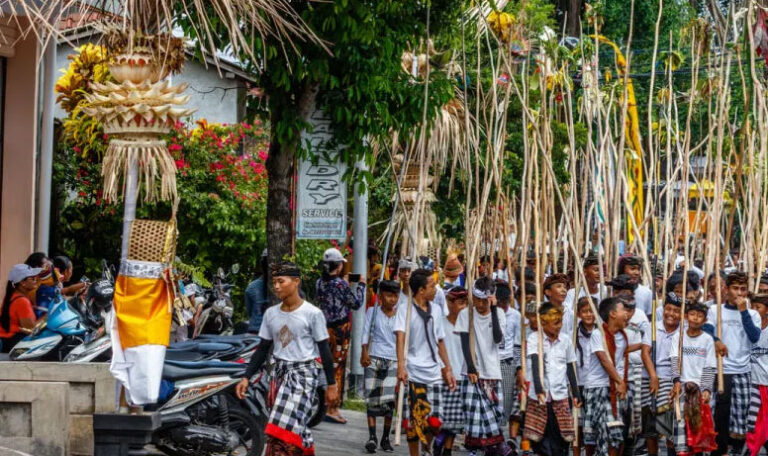 In October 2022, Rudiarta revealed that the Badung Tourism Office had budgeted huge sums to ‘aggressively promote’ tourism across the regency. He revealed an IDR 5 billion (USD 323,000) budget for the marketing campaigns to be spent on the promotion of Badung Regency both domestically and abroad.
In October 2022, Rudiarta revealed that the Badung Tourism Office had budgeted huge sums to ‘aggressively promote’ tourism across the regency. He revealed an IDR 5 billion (USD 323,000) budget for the marketing campaigns to be spent on the promotion of Badung Regency both domestically and abroad.
All across Bali, 2023 is shaping up to be the year of the tourism village. Earlier this week, the Chairman of the Association of Indonesian Tours and Travel Agencies (ASITA) Bali, I Putu Winastra, has told reporters how he and his teams want to see operators offering more nature-based tourism activities in Bali, which include tourism village experiences.
Winastra said that interest in tourism villages is increasing, especially from European and Australian travelers. “In the past, Australian tourists, who previously preferred the Kuta and Seminyak areas, are now starting to be seen visiting tourist villages,” he said.
Tourism villages throughout Bali are being offered support and resources to level up in 2023. According to the Chairman of the Bali Tourism Village Communication Forum, I Made Mendra Astawa, there are 238 tourist villages in Bali, with 70% of them still operating in a pilot phase. (Main Article: North Bali Airport)
Astawa confirmed to reporters earlier this month that his teams will be helping tourists village on a regency-by-regency basis throughout 2023, starting in Denpasar. He explained that Penatih Village, Kesiman Kertalangu, Sanur Kaja, Sanur, Sanur Kauh, and Serangan have all been identified as having huge potential as tourism villages.
Astawa said that communities could look to existing successful village programs for inspiration. “If we look at it evenly, it is clear that the tourist villages in the Ubud area, Gianyar, is the most visited, then Bangli Regency, where there are many waterfalls, then Singaraja City. That’s all foreign tourists who come, and now domestic tourists are starting to come in”.
Social media has played a huge role in making Bali one of the most popular destinations in the world. The question now is whether travelers will make the shift to supporting village-based tourism on the scale local leaders are aspiring to. (Main Article: North Bali Airport)
Bali Tourism Leaders Meet With Government To Discuss Swimming Ban On Popular Beaches
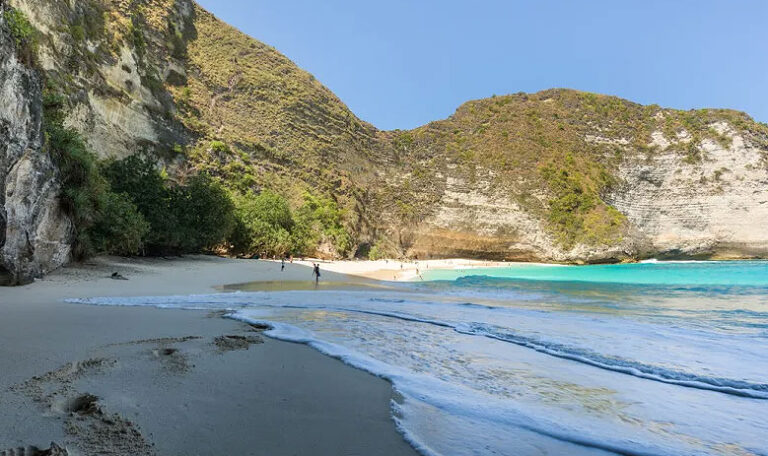 Tourism leaders in Nusa Penida have met with the Regent of Klungkung to discuss the recent ban on swimming at some of the island’s most famous beaches. During the meeting on Monday, tourism leaders raised concerns that the swimming ban would cause damage to the tourism sector on the island. The ban was put in place by authorities on the island after a recent rise in accidents leading to callouts to local search and rescue teams. (Main Article: North Bali Airport)
Tourism leaders in Nusa Penida have met with the Regent of Klungkung to discuss the recent ban on swimming at some of the island’s most famous beaches. During the meeting on Monday, tourism leaders raised concerns that the swimming ban would cause damage to the tourism sector on the island. The ban was put in place by authorities on the island after a recent rise in accidents leading to callouts to local search and rescue teams. (Main Article: North Bali Airport)
Representatives from the Nusa Penida Tourism Activists Association (HPPNP) met with the Regent of Klungkung, I Nyoman Suwirta, on Monday, 30th January. They tabled their concerns regarding the ban on tourists swimming on Kelingking Beach, Diamond Beach, and Angel Billabong Beach. The Chairman of the Nusa Penida Tourism Activists Association, I Putu Gede Suka Widana, said that tourists should be allowed to swim on the island’s most famous beaches.
He noted that, in their opinion, Angel Billabong Beach is especially safe during low tide but that at high tide, conditions get dangerous. He agreed that the waves at Kelingking Beach are ‘friendly’ in the morning but get dangerous and choppy during the afternoon. (Main Article: North Bali Airport)
Widana suggested that officers should use loudspeakers to inform tourists when it is and isn’t safe to swim at the beaches. He said, “That is also a promotional medium. They (tourists) will promote it directly”. He highlighted the group’s concerns that banning swimming could be risky for tourism businesses. He shared that before Covid-19, Nusa Penida was so busy that travelers would struggle to find last-minute accommodation, but that now hotel occupancy is still picking up.
Regent Suwirta listened to their concerns but was steadfast that the ban on swimming would not be lifted until conditions at sea were safer. He said, “When the sea is conducive and good, we will reconsider.” A tidal and weather warning remains in place by the Indonesian weather agency. (Main Article: North Bali Airport)
Regent Suwirta’s decision to keep the swimming ban in place at Kelingking Beach, Diamond Beach, and Angel Billabong Beach is supported by Klungkung Police Chief AKBP I Nengah Sadiarta. He has emphasized that the tourist attractions remain open, but that swimming is prohibited to keep everyone safe. He added, “To tour guides, if their guests want to swim, they should be advised that there are restrictions on activities in the water.”
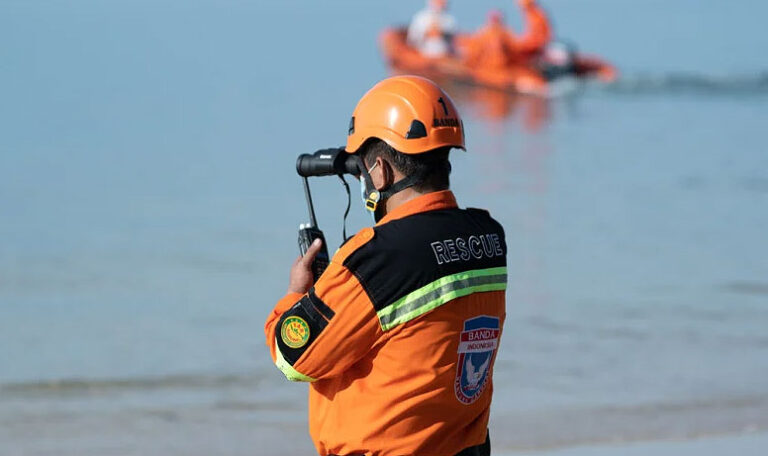 Police lines have been installed on Kelingking Beach, Diamond Beach, and Angel Billabong Beach to make it clear that entering the water is not allowed. The new and temporary rules came into place on 23rd January following a series of serious incidences in Nusa Penida since late December. Nusa Penida Police Chief Kompol Ida Bagus Putra Sumerta confirmed the ban and that the situation would remain under review. (Main Article: North Bali Airport)
Police lines have been installed on Kelingking Beach, Diamond Beach, and Angel Billabong Beach to make it clear that entering the water is not allowed. The new and temporary rules came into place on 23rd January following a series of serious incidences in Nusa Penida since late December. Nusa Penida Police Chief Kompol Ida Bagus Putra Sumerta confirmed the ban and that the situation would remain under review. (Main Article: North Bali Airport)
The incident that really drew the line in the sand for authorities in Nusa Penida happened on 21st January. Search and Rescue teams were called to assist a Russian tourist after she had been hit by strong waves on the famous Kelingking Beach. Officers later told reporters that the 33-year-old tourist had dislocated her shoulder. Although she was able to walk, she needed assistance from SAR team members to navigate the dangerous path back up the cliffside.
Authorities in Nusa Penida have not given a prospective date for the ban on swimming to be lifted. Bali is in the middle of rainy season. This time of year not only brings heavy downpours but also storms at sea and rapidly changing tides and strong, unpredictable waves. There is a possibility that swimming will be banned on Nusa Penida’s most iconic beaches for the remainder of the rainy season, which generally dries up in late March.
Check out our resort indoor dive center in Tulamben


